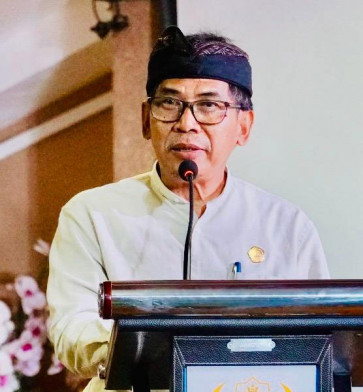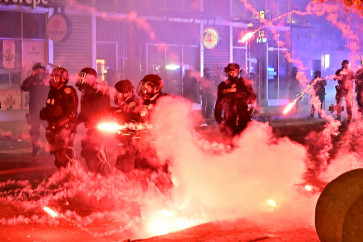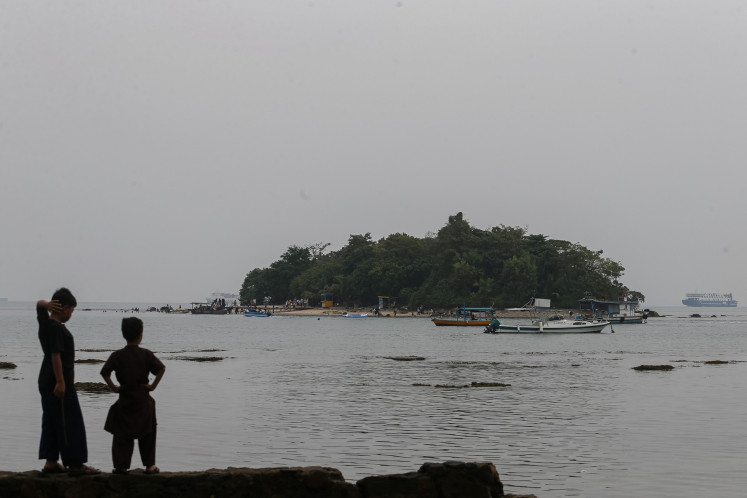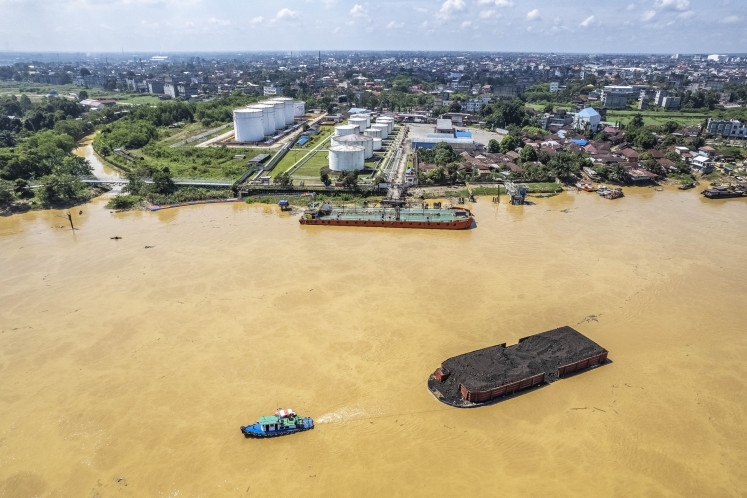Popular Reads
Top Results
Can't find what you're looking for?
View all search resultsPopular Reads
Top Results
Can't find what you're looking for?
View all search results‘Sejarahjakarta.com’ explores, promotes capital’s history
Is it Kebayuran or Kebayoran? And where does the word mayoran in Kemayoran come from? The answers to these questions can be found on sejarahjakarta
Change text size
Gift Premium Articles
to Anyone

I
s it Kebayuran or Kebayoran? And where does the word mayoran in Kemayoran come from? The answers to these questions can be found on sejarahjakarta.com, which seeks to explore Jakarta’s history.
Nowadays, it is widely known as Kebayoran, the area in South Jakarta that is divided into Kebayoran Baru and Kebayoran Lama. But it is actually named after bayur, a type of tree that is highly resistant to termites. Kebayuran means a place to store bayuran logs, which were sent along the Krukut and Grogol rivers to Batavia’s city center.
However, the place is also known as a storage place of other types of wood.
Meanwhile, the word mayoran for Kemayoran in Central Jakarta comes from the word mayor in reference to a French chevalier named Isaac de l’Ostale de Saint Martin who owned a large plot of land in the eastern part of Jakarta.
The website is run by a group of people from the Bamboo Community whose main activity revolves around publishing history books.
The aforementioned examples date back to the Dutch colonial era, when many places in the capital were named. The website explains the origin of its names, citing information from various history books, such as the one authored by Jakarta historian Rachmat Ruchiat.
As a melting pot, the capital city is rich in history, emanating from diverse and various backgrounds. But not many residents were aware of that, partly because of the lack of resources and the administration’s failure to disseminate the information, said JJ Rizal, the historian behind the website.
“We want to introduce Jakartans to the history of the place that they are currently living in,” he added.
“Jakarta was made up of multiple ethnicities but it had a high level of tolerance. They even fought against segregation introduced by the VOC [Dutch East India Company].”
Several places in Jakarta were named by the VOC after other cities across the archipelago, which was aimed to divide groups of people based on their ethnicity or places of origin like Makassar in East Jakarta, which is a reference to the capital city of South Sulawesi and Matraman, which refers to Mataram.
“But segregation effort didn’t work. In fact, people mingled and assimilated regardless of where they came from. It meant that the segregation imposed by the colonizers failed and we should learn from it,” Rizal said.
The fact that Jakarta was a tolerant city and many places in the capital were named after trees should also serve as a reminder to residents about the true meaning of the city, he said.
“Maybe what Jakartans see today does not reflect the real face of the city. Jakarta should be green and blue, but does the city’s spatial planning cover that?” he said, referring to open spaces and water zones in the city.
According to Jakarta administration data, greens area in the city amount to only 13 percent, a far cry from the 30 percent required by the 2007 law on spatial planning.
Rizal also noted that the cultures in Jakarta were mixed, including those of the European countries as reflected in the city’s Tanjidor, which is associated with Betawi culture.
The move to proliferate Jakarta’s original culture comes against what Rizal said was minimal effort from the Jakarta administration to educate residents.
The city actually has a dedicated mobile application called Encyclopedia Jakarta and a website, which are meant to educate the public about the city’s history. However, the contents are still at a minimum.
There is a subcategory in the app that lets users find information about the origin of places in Jakarta. However, the information is not always immediately available.
“The contents are being continuously developed. We are working on it,” said Alberto Ali, the head of the information and development division at the city’s tourism agency.
He admitted that the information was crucial so that Jakartans could be made more aware of the city’s history.
“The information can also be obtained at our libraries,” Alberto said.









